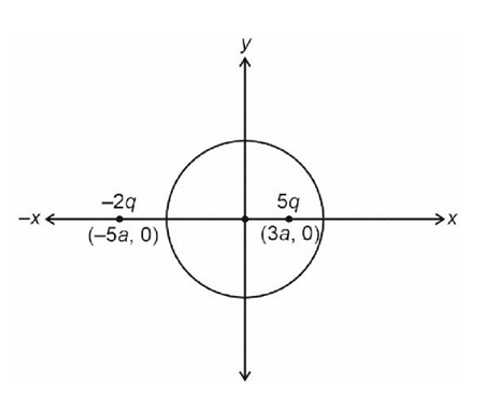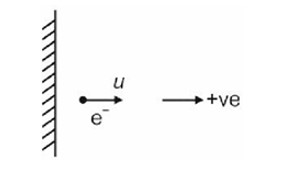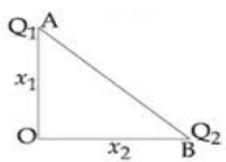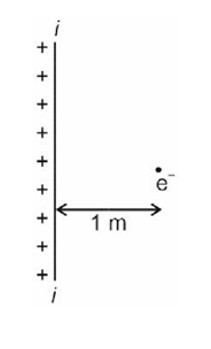Charge Q? and Q? are at point A and B of a right angle triangle OAB (see figure). The resultant electric field at point O is perpendicular to the hypotenuse, then Q?/Q? is proportional to:
Charge Q? and Q? are at point A and B of a right angle triangle OAB (see figure). The resultant electric field at point O is perpendicular to the hypotenuse, then Q?/Q? is proportional to:
Option 1 -
x₂²/x₁²
Option 2 -
x₁²/x₂²
Option 3 -
x₁/x₂
Option 4 -
x₂/x₁
-
1 Answer
-
Correct Option - 3
Detailed Solution:Net field along AB at O must be zero.
E? cosα = E? sinα
(kQ? /x? ²) (x? /AB) = (kQ? /x? ²) (x? /AB)
Q? /Q? = x? ³/x? ³
Similar Questions for you

From Gauss law
For maximum value of s, initially, electron must move away from plate.

ut + at2 = s
t = 1u = 1m/s s = –1 m
1 × 1 – a × 12 = – 1
-> a = 4m/s2
= 4.05 × 10–22C/m2
Class 12 physics chapter 1 Electric Charges and Fields is an important chapter for the CBSE Board exam. In unit 1 of the CBSE Board exam of class 12 Physics, there are questions from three chapters including - Electric Charges and Fields, Electrostatics, and Electrostatic Potential and Capacitance. This unit carries a total 16 marks.
According to question, we can write
For maxima of force
Taking an Exam? Selecting a College?
Get authentic answers from experts, students and alumni that you won't find anywhere else
Sign Up on ShikshaOn Shiksha, get access to
- 65k Colleges
- 1.2k Exams
- 679k Reviews
- 1800k Answers


